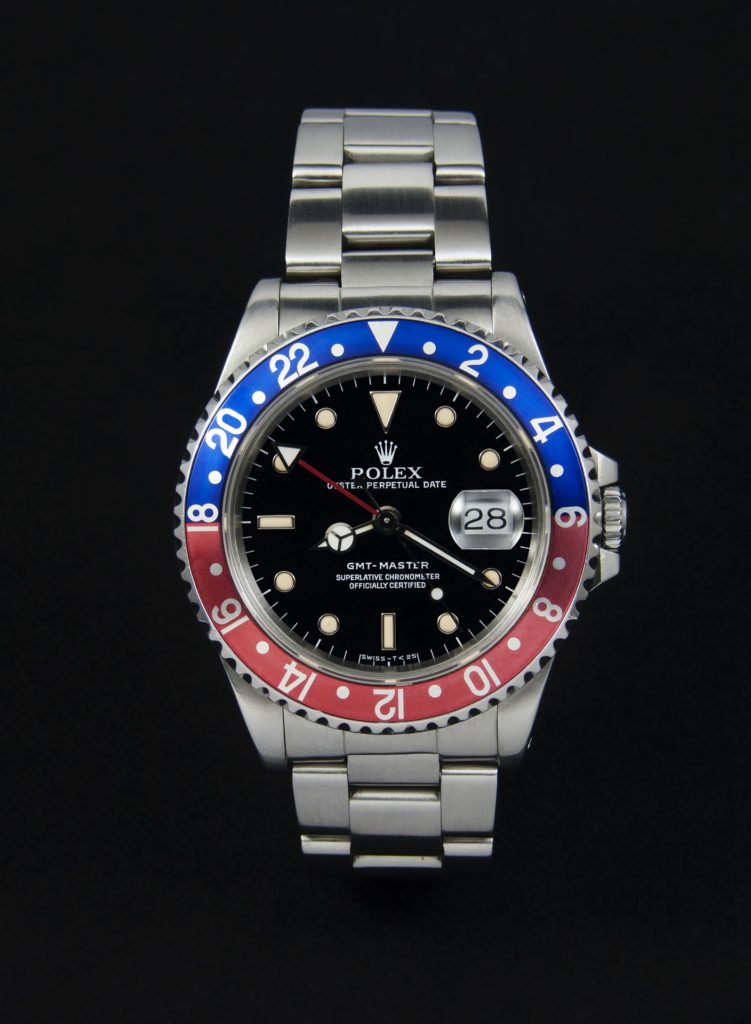Dive Watches Save the Day
Tell me if this has happened to you… Your friends all go to the beach to surf and have fun in the waves. You want to impress some of the ladies in the group, but you also don’t want your expensive timepiece to get ruined in the water. So, you put on the no-name digital watch you got for $10 at the discount store down the road. Suddenly, you don’t feel so impressive… Don’t ever let that happen to you again, especially because it’s completely unnecessary. Why is that the case? It’s all thanks to an innovation from many years ago, called the dive watch.

What is a dive watch? According to the International Organization for Standardization (ISO), a dive watch is “designed to withstand diving in water at depths of at least 100 m and equipped with a secured measuring system to indicate the diving time, which is visible in darkness” (ISO, 2018). Other standards of a dive watch include the presence of a second hand or subdial to verify the watch is ticking plus resistance to shock, magnetism, and corrosion. But we’ll just focus on the most publicized standards: depth, dive timer, and luminescence.
Dive Watch Standard 1: Depth

On an everyday watch, you may see water resistance ratings of 30 or 50 meters. By using gaskets within the watch, as well as screw-down crowns, pushers, and case backs, dive watches keep their components dry at much deeper water levels. 100m is the ISO standard but there are many models that take it to the next level beyond that. Many of the major players in the dive watch arena present timepieces with at least 200m of water resistance – beating out the standard and providing a depth rating sufficient for most anyone. However, for those hard-core divers who want to dive deeper, some watches go far beyond.
It’s not uncommon to have a 500m depth-rated watch in one’s personal collection. However, that’s small potatoes compared to some. You may have seen the news not long ago about Rolex launching their DeepSea Sea-Dweller, which is rated to 3900m. The world’s deepest-rated mechanical watch, however, goes even deeper than that: the CX Swiss Military clocks in at a massive depth rating of 6,000m!
If you can believe it, watches can be rated even deeper than that, though they are not mechanical. There’s an unexpected “hack” that allows for even more significant depth ratings – filling the watch with silicon-based oil. Mechanical watches will not accurately tell time when filled with oil, as the liquid alters the rate that the balance wheel spins. Quartz movements, on the other hand, can function unaffected when the watch is filled with a silicon-based oil. The oil boosts the depth rating because it is not susceptible to pressure changes with deep diving. With this technology in place, brands such as Sinn and TechnoMarine offer watch models with an insane depth rating – 12,000m! For those not in the metric system, that’s 39,600 feet. That’s like diving the height of Mount Everest 1.5 times!
Dive Watch Standard 2: Dive Timer

While depth gets the most hype of the dive watch specs, dive timing is equally as important to a diver. Even those who don’t dive know that maintaining oxygen levels is vital when diving. The dive timer function essentially allows the wearer to determine the time that he/she has been underwater. This is typically in the form of a unidirectional bezel, so the wearer can mark when their oxygen level will be low. I 100% guarantee you’ve seen this trait if you have spent any length of time in the horology community – it’s when a bezel has tick marks at various time intervals and an arrow or two to point to the oxygen danger time. Now you can impress your friends with a fun fact that there is a reason for such a bezel – to meet dive timing requirements!
Dive Watch Standard 3: Luminescence

The final major technology that a dive watch must possess is luminescence. Like the dive timer, the reason for this may not be obvious to non-divers. But if you are a diver, you know it gets to be crazy dark as the depth increases. If it’s that dark, how will you be able to use the dive timer technology to monitor your oxygen levels? The answer is luminosity. While this can occasionally be from a specific light-up function in the watch, a luminescent dial and/or bezel markings are the most common ways to accomplish this task. If you own a few divers, you have probably noticed that their luminosity trumps that of your other watches. That, like the bezel, is intentional and the mark of a great diving watch!
Whether you are a diver or you just seek to impress your friends with style and class while hanging ten, dive watches are the perfect solution for you. With impressive technology, strong water resistance, and brands/prices that range from $50 to $50k and up, you need a dive watch and there is one out there with your name on it (metaphorically, of course… Unless your name is Rolex or Omega).
Resources:
ISO 6425:2018. ISO. (2018, October 17). Retrieved February 28, 2023, from: https://www.iso.org/standard/66517.html